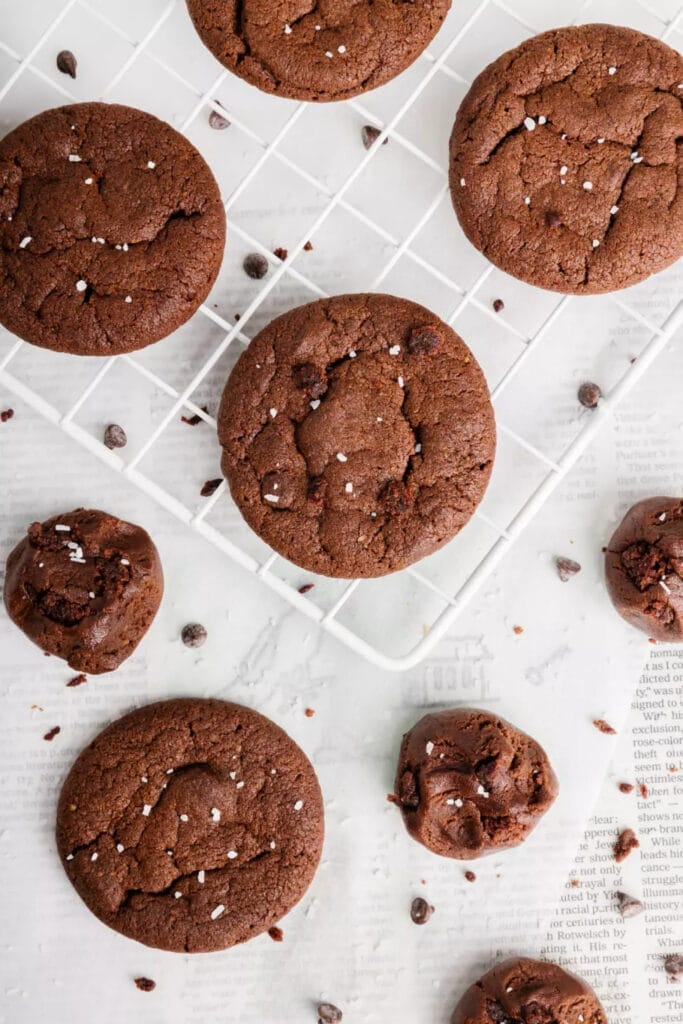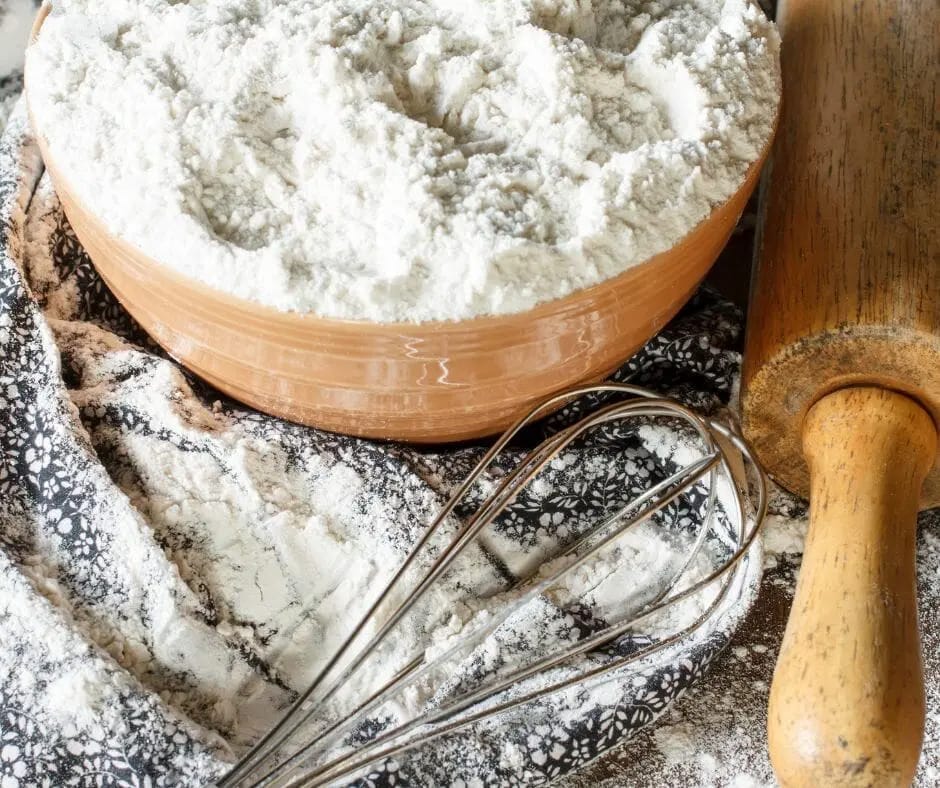As an Amazon Associate, I earn from qualifying purchases. In addition, I participate in several other affiliate programs that allow me to earn while I recommend products I love.
Baking cookies is an art that involves the careful selection and measurement of ingredients.
Among the essential components, flour stands out as a key player in creating the perfect texture.
In this blog post, we’ll explore the role of flour in cookies, the answer to “what does flour do in a cookie recipe,” and whether or not you need flour for cookies!

The Function of Flour in Cookies
Flour serves multiple important functions in creating mouthwatering cookies.
Let’s delve deeper into each aspect.

1. Providing Structure and Texture
What does flour do to a cookie?
One of the primary roles of flour in cookies is to provide structure and contribute to their texture.
This is achieved through the formation of gluten, a protein network that gives cookies their characteristic chewiness or tenderness.
Gluten Formation and Its Impact on Cookie Texture
When flour is mixed with liquid, such as water or eggs, the proteins glutenin and gliadin in the flour combine to form gluten.
The amount of gluten developed affects the final texture of the cookies, with more gluten leading to chewier cookies and less gluten resulting in a more delicate texture.
Different Types of Flour and Their Effects on Structure
Different types of flour contain varying levels of gluten-forming proteins.
Bread flour, for example, has a higher protein content and creates more gluten, resulting in chewier cookies.
All-purpose flour strikes a balance, providing structure while maintaining tenderness.
Cake flour, with its lower protein content, produces softer and more delicate cookies.
Balancing Gluten Development for Desired Cookie Characteristics
The mixing technique and flour used determine the amount of gluten developed.
By adjusting mixing times or using specific flour types, you can control the gluten formation to achieve the desired cookie characteristics.
2. Absorbing Moisture

Why use flour in cookies?
Flour plays a vital role in absorbing moisture in cookie dough.
This impacts the dough’s consistency and affects the final texture of the cookies.
Controlling the Dough Consistency
Flour acts as a moisture regulator in cookie dough.
It absorbs excess liquid, preventing the dough from becoming too sticky or runny.
Proper control of the dough’s moisture content helps ensure optimal texture and shape during baking.
Preventing Excessive Spreading or Dryness
The amount of flour used can influence the spread of cookies.
A higher flour-to-liquid ratio results in cookies that spread less, while too little flour can lead to excessive spreading.
Additionally, the right amount of flour helps prevent cookies from becoming overly dry.
Adjusting Flour Quantities Based on Moisture Content
The moisture content of ingredients like butter, eggs, or even the air humidity can affect the dough’s consistency.
Adjusting the amount of flour accordingly ensures the dough reaches the desired texture, preventing cookies from being too flat or too dry.
3. Binding Ingredients Together

What is the purpose of flour in cookies?
Flour plays a crucial role in binding the ingredients together in cookie dough, creating a cohesive mixture that holds its shape during baking.
Enhancing Dough Cohesion
The proteins in flour form gluten, which acts as a binder, holding the dough together.
This ensures that the ingredients are evenly distributed throughout the dough, resulting in a uniform texture.
Creating a Uniform Texture
The binding properties of flour contribute to the uniform distribution of ingredients in the dough.
This helps prevent ingredient separation during baking, resulting in cookies with a consistent texture and flavor.
Importance of Flour in Preventing Ingredient Separation
Without flour, cookies would lack the structure necessary to hold other ingredients together.
The addition of flour ensures that your favorite mix-ins, such as chocolate chips or nuts, are evenly dispersed throughout the dough, creating a harmonious blend of flavors.
Types of Flour Used in Cookie Baking

Different types of flour offer unique properties that can enhance the texture and flavor of your cookies.
Here are some commonly used options:
All-Purpose Flour as a Versatile Option
All-purpose flour strikes a balance between protein content and versatility.
It is suitable for a wide range of cookie recipes and produces cookies with a desirable texture.
Specialty Flours and Their Unique Properties
Whole wheat flour, almond flour, or oat flour can add distinct flavors and textures to cookies.
These specialty flours can provide additional nutrients or cater to specific dietary preferences.
Gluten-Free Flours for Dietary Considerations:
Gluten-free flours, such as rice flour, tapioca flour, or chickpea flour, are ideal for individuals with gluten sensitivities or those following a gluten-free diet.
These flours can be used in combination or as standalone alternatives, ensuring everyone can enjoy delicious cookies.
Flour Substitutes and Alternatives

While flour is a staple in cookie baking, there are alternatives available for those with dietary restrictions or seeking unique flavors.
Gluten-Free Options for Individuals with Dietary Restrictions
Gluten-free flours, such as a blend of rice flour, tapioca flour, and potato starch, can be used as a substitute for wheat-based flours.
These alternatives allow individuals with gluten sensitivities or celiac disease to enjoy delicious homemade cookies.
Exploring Alternative Flours for Unique Flavors and Textures
Specialty flours, like almond flour or coconut flour, offer distinct flavors and textures to cookies.
Experimenting with these alternative flours can add a delightful twist to your cookie creations.
Understanding the Potential Impact on the Final Cookie Product
It’s important to note that when substituting flours, especially gluten-free or alternative options, the texture, flavor, and baking time of the cookies may be affected.
Some experimentation and adjustments to the recipe may be necessary to achieve the desired results.
Hey! Want to learn more about the role of ingredients in cookies? Check these out!
